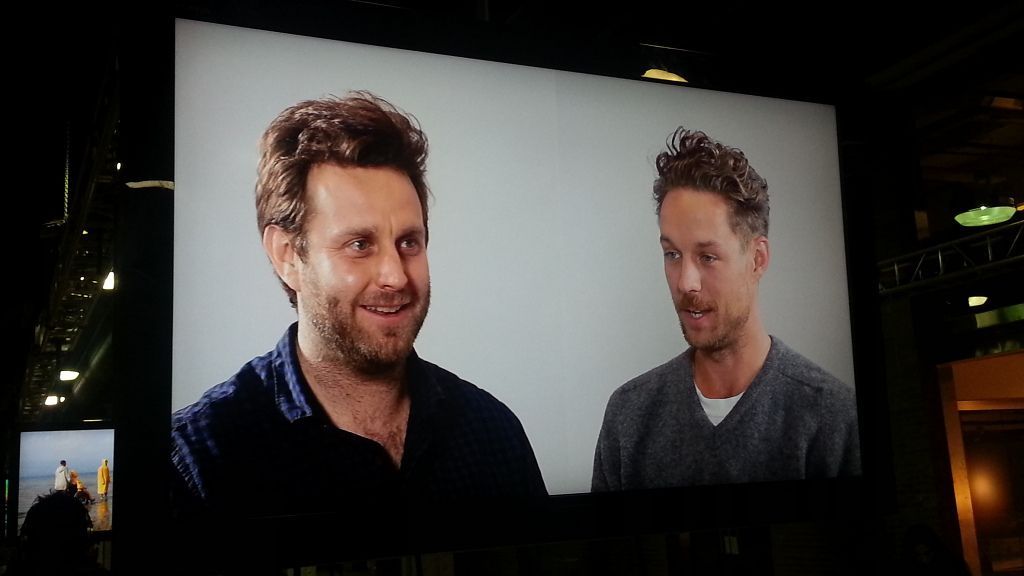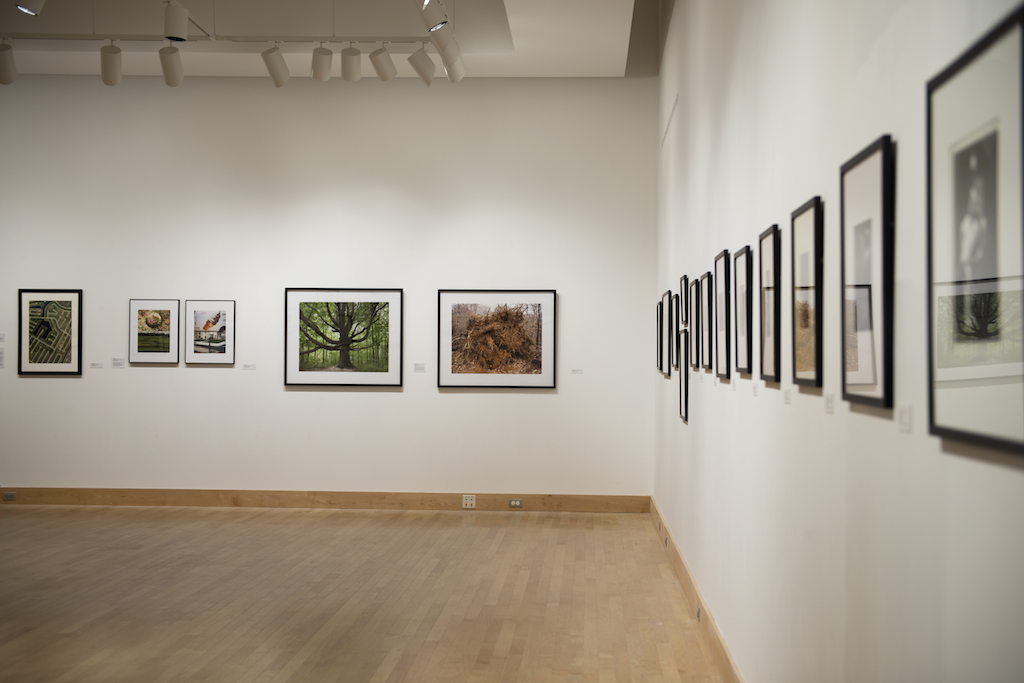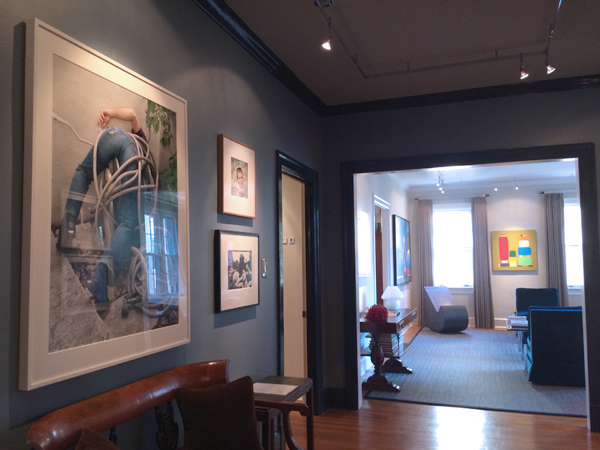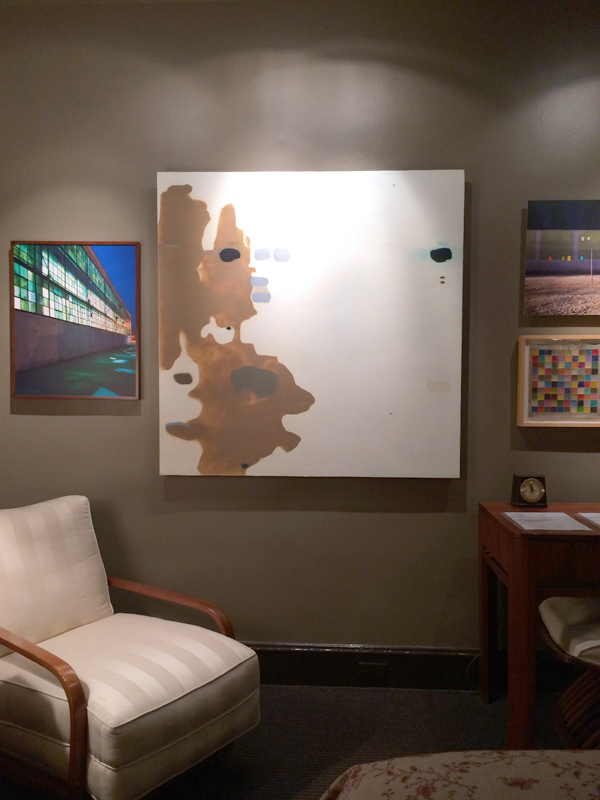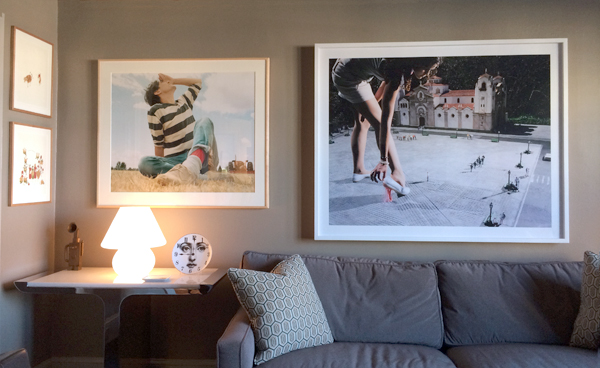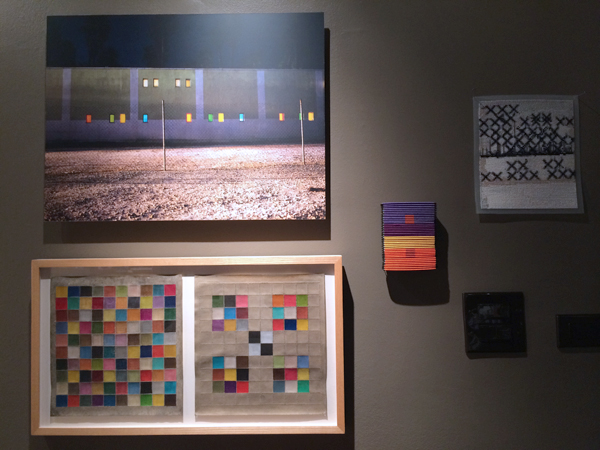Lu Zhang visits Fred Ognibene in his home in Washington DC to view his collection and talk about living with art.
Frederick Ognibene is a supporter of emerging and mid-career artists and a collector of contemporary art. Fred began collecting in 1984 and his collection includes nearly 300 works by local, national, and international artists. He’s also supported the careers of some local, D.C. and Baltimore-based, artists. Fred avidly attends Art Basel Miami Beach, the Armory Show, and other international arts fairs. Many works in his collection have been loaned to museums and arts organizations for their exhibitions. In addition, he has donated works from his personal collection to the permanent collection of the Hirshhorn Museum and Sculpture Garden.
Fred has been a member of the Board of Directors of Washington Project for the Arts (WPA) and/or WPA/Corcoran for nearly 20 years, recently completing a three-year term as Board Chair of WPA. He has also served on the Board of Directors of the Cultural Development Corporation of D.C. as well as on its Arts Incubator (“Flashpoint”) Committee and has been a member of the Hirshhorn Contemporary Acquisitions Council and its Curators’ Circle. Fred lives in Washington, D.C. and works at the National Institutes of Health in Bethesda, Maryland as Deputy Director for Educational Affairs and Strategic Partnerships at the NIH Clinical Center.
LZ: How did you become interested in art?
FO: My interest really accelerated when I was living in New York attending medical school and during my early post medical school training. It was a really exciting time in the late 70s-early 80s. There was a surge in creativity in all aspects of life, visual arts in particular. I went to galleries… SoHo was hot, young, and still hip in terms of visual arts.
LZ: When did you start collecting?
FO: Not until I moved to Washington. It was not something I had really envisioned since I had loans from undergraduate and medical schools and really no excess “wiggle room” in my budget. A friend took me to the Torpedo Factory in Alexandria. There were many artists and their studios as well as some commercial space. For the most part I honestly did not like much of the art. However, I did find a monotype by Isabel Field which I liked, and it was my first purchase.
LZ: You have over 300 works in your collection. How many are on view here?
FO: Probably about 70 are on view in my apartment. I also have a few pieces in my office at work at the NIH. I also have a small apartment in Miami Beach where I have additional work.
LZ: Are you able to show your whole collection?
FO: No, I have multiple storage spaces. That’s one of the things that is always difficult. In the best situation I’d love to be able to show everything I have collected, but I certainly don’t have the means or the space to do that. I guess that’s one sign of a true collector – I did not stop collecting when I ran out of wall space. I do really like all the work in my collection, and it bothers me that I can’t show all of the work that I have all the time. But nobody does, museums don’t that, other collectors don’t. I definitely want to be respectful of the work I own. Pieces need to be rotated periodically for conservation reasons. With all of these issues, it’s difficult to make those decisions of what gets shown and what is stored.
LZ: Are there any plans for the future of your collection?
FO: My ultimate dream would be to find an amazing space that would not cost an arm and a leg, that could be outfitted appropriately with great lighting and temperature control, and have it be available to the public. I personally don’t have the financial means to do so right now and likely never will. Maybe it could work if there’s a critical mass of collectors that were in a similar place as I am, as far as having artwork but not enough space to show it. We can’t do it individually but conceptually as a group it might work.
LZ: Are there works that you keep on permanent display?
FO: Some grow in favor, some fall off, but I really like all of my works. I primarily collect painting, photography, some drawing, some sculptural works, and a few other things that involve unconventional objects. I really love the photography in my collection.
LZ: I noticed a work in the hall outside, are you slowly expanding into the rest of the building?
FO: It’s actually a unique work on paper by Patrick Wilson, a California-based artist. This is a cooperative apartment. I thought it was complimentary to the space but I had to get my neighbors to agree to my placing it in the common area, and they did!
LZ: What criteria do you have for purchasing a work?
FO: I can say that my primary criterion is my reaction to a piece of work. I have to really like the work: the technique, subject matter, and the aesthetics. Price point is also a factor, but if things are a stretch I appreciate the fact that most gallery owners are receptive to term payments.
LZ: It sounds like you go with your gut and trust your instincts. I think that’s something that new collectors have difficulty with. Maybe they like something but they aren’t sure if it is “good.” Can you talk about that?
FO: I think with time, the more you see, the more you can begin to appreciate quality and technique. Good is a subjective word. Obviously people who are formally educated and are regarded as critics have the educational pedigree, the knowledge, and a broader base on which to speak with some authority. I look at art, and the first thing I have to appreciate is if the work “grabs me.” I do also have to think practically. If it’s too big, I can’t buy it. I wish I had more space for large work, but I don’t.
I always look at what the artist has done so far in terms of exhibitions and resume, even if it’s an emerging artist. I like to know where they were educated, if they were formally trained or not. It doesn’t matter a great deal, but it does say something about the individual artist. It helps to know whether they’ve had works in solo or group shows and if there are any critical reviews that can at least give me someone else’s opinion to consider. But that doesn’t necessarily drive me.
The thing that should absolutely not motivate purchases for people is to look at what you have on your wall as an investment that will make you money over time. I realize that if you look at my collection in its entirety, I certainly have spent a lot of money on art. But I didn’t buy any of it thinking that in 20 years it will be worth five times what I paid for it. It’s not the way I approach collecting. I certainly don’t want to toss away money and, at some point, I may have to divest the works. So far, I’ve given a few works to people as gifts. I have also donated four works from my collection to the Hirshhorn Museum and Sculpture Garden. There are benefits in that regard, but at the same time it’s like parting with a child; it’s hard to do that.
LZ: What other advice would you give to new collectors?
FO: Don’t be afraid. Go to galleries, museums, and art fairs. Ask questions of gallerists, artists, other collectors, and museum professionals. You can (and should) learn so much. When you go to openings or museum exhibitions, I advise reading all related materials – the brochures, wall text and captions, attend lectures, etc. They all provide valuable information about the artist(s) as well as historical and cultural information which assist with the context of the work.
LZ: What’s the range of work you collect?
FO: My collection is fairly broad and encompassing, but the largest percentages of works in my collection are paintings and photographs. As a body of work, I think my photographs are really cohesive; not intentionally collected that way, but they all work. I am limited in terms of available space, so large scale works are not possible, and that is tough sometimes.
LZ: Do you focus on a region, or does geography play a part at all?
FO: I started out, about 30 years ago, primarily collecting work that was focused on geographically proximal artists. Over the years I’ve broadened my horizons as I’ve read more and traveled more and made it a point to just see more art. I’d say my collection is about forty percent from this region, including Washington DC, Baltimore, and the Richmond area and sixty percent not. That’s not because I don’t love artists here. I’m still collecting their work.
After we’re finished I’m actually going to pick up two pieces that I’ve just finally paid for. I don’t have the ability to say, “…oh I like that piece, let me write a big check.” I want to stress to younger collectors that it’s important to educate yourself, get out there and look. If you see something you like and the price scares you a little bit (which is both a good and a bad thing) and if it can’t work for you aesthetically, you shouldn’t buy it. But if you think you can ultimately afford it, most galleries will work with an individual on payments over time. It’s good for you because you can stretch the payment over two or three months, it’s good for the artist because they have someone who’s acquired the work, and it is good for the gallery. So don’t be afraid to ask that question.
LZ: Where do you purchase works from? Are there specific galleries that you frequent?
FO: Many of the works I’ve gotten at the annual Washington Project for the Arts exhibition and auction galas. There are galleries in town that I go to and like a lot such as Connersmith, Curator’s Office, and G Fine Art. I’ve also purchased work from Hemphill Fine Arts and when the Fusebox Galley was open, I was a “regular.” Right now I’d say it’s mostly Connersmith and Curator’s Office. There are also a few galleries in Los Angeles, such as Susanne Vielmetter and Cherry and Martin. I try to get to New York as much as I can. It’s not always easy. I probably make it up there every other month.
LZ: Which galleries do you like in New York?
FO: I like Mixed Greens a lot as well as Yancey Richardson and Yossi Milo Galleries. They all have great programs and very nice staff. There’s one artist that I collect who’s represented by Paula Cooper Gallery. She’s approachable, and the people that work with her are super as well. There are some galleries like Mary Boone, David Zwirner, and Barbara Gladstone that I go to, but those experiences can be a little overwhelming.
LZ: Do you buy work online?
FO: No, I’ve only recently done that, but I look at work online all the time. I may call a gallery and ask about a piece. On three occasions I have had work that I’ve seen online held until I can have someone take a look in person for me. One case involved a work at a gallery in Los Angeles. Someone in Los Angeles that I trust implicitly went to the gallery, took a look, spoke to the gallerists, and my friend gave the thumbs up. I know more people are buying work online, but I’m not totally comfortable with it yet.
LZ: There’s differing views on how far or close to art centers like NYC artists should live, the internet being cited as one reason artists can live further from urban centers and still have viable careers…
FO: I think that’s true for both the artists and collectors. We don’t physically have to go somewhere, but it depends on what you know and what you are willing to do. Certainly getting access to art and the work of an artist is easy online. I think the internet makes people aware and helps to initiate a conversation. Some people, if they know the artist and the work, or are familiar with the gallery, are comfortable enough and have the confidence to say “I’ll take it.” That’s great.
LZ: What’s your view on support for art in this area?
FO: I think that DC is a little bit of a sleeper in many ways. It is an under-recognized and under-appreciated city in the art world, and while some collectors here are known entities, many others are less visible but they are equally passionate. I think artists shouldn’t be discouraged here, because there really are many local patrons, and the art scene in Washington is more vibrant than some people think.
LZ: We’ve talked about your relationship with art dealers and galleries in the area, I’m curious about your relationship with artists.
FO: I really like meeting artists, particularly artists whose works are in my collection. From a practical standpoint it is very easy in the Baltimore to D.C. area to meet a local artist who’s represented by a local gallery. The introduction is easy. Since the work I collect tends to be that of emerging to mid-career artists, I’ve found that the artists are still very accessible. I don’t do a lot of studio visits. I’ve probably been to five or six studios. Although I enjoy visiting studios, for me that’s not an obligation or something I feel I MUST do. I’m much more engaged with what I can see in the gallery and talking to artists, gallerists, or directors in that setting.
LZ: What else do you collect besides art?
FO: I collect pottery. A lot of the work here is early twentieth century from a Dutch town called Gouda. I collected art before I started collecting pottery, but once I saw the Gouda pieces, I began looking for them. I find them in estate sales or consignment shops. People I know also find Gouda pottery pieces for me. I also have a collection of Rookwood pottery. Recently I’ve been collecting mid-century Royal Copenhagen faienceware. I collect a few other things; collecting is part of who I am.
FO: This is my media room which used to be a classic guest bedroom. I finally got a flat screen television. I’ve also been collecting videos some new media, so now I can screen my few video works as well.
LZ: Tell me more about the videos that you’ve started collecting.
FO: I have five works right now. I’d like to say a few things. Video works are a little easier to maintain and store because they don’t take wall space. It’s an area of collecting where the same principles work: I have to like the imagery or the theme. I’m not quite as adept yet in discerning a lot of technical or creative issues, and frankly I probably don’t know as much as I should. Since video works can be easily duplicated, it is important to get all the documentation to vouch for the provenance of the work. It’s something that I’m not yet as adept as major collectors of new media, but it is something that interests me.
LZ: How do you live with the video works? Do you show them in the media room?
FO: I bring them out when I have a group over.
LZ: I’d like to talk in more depth about a few works in your collection. Can you walk me through the highlights?

FO: This is a documentation of a performance piece by Wilmer Wilson, who’s a young artist. He’s currently attending the University of Pennsylvania’s MFA program. He did a conceptual performance piece which was based on a slave named Henry “Box” Brown. I may not be exactly correct, but I believe Henry had escaped to freedom by having himself shipped in a crate from Virginia to Philadelphia abolitionists. The artist puts these stamps on his body one by one. When he did this conceptual piece in D.C., I believe he actually went to a post office here. I think it’s stunning. Obviously you can’t really appreciate the full story of what went into it since what you see is the final product of the performance, but I love it. I’ve seen Wilmer Wilson do a few other performance pieces, and in all cases, he really is close to genius. He is represented by Connersmith.
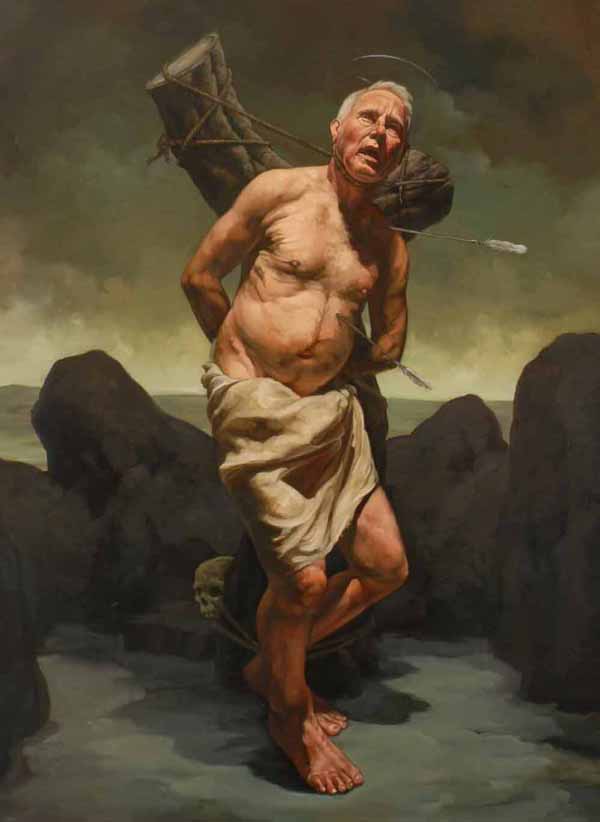
FO: This is an image of Saint Sebastian, but it is an image based on an older man who served as the model for Saint Sebastian. This is by Eric Sandberg, who’s such a good painter. This piece had never been seen at the gallery. I commissioned it through Conner Contemporary before it became Connersmith. It was shown at American University in the “Catalyst” show in 2010, which was the 35th Anniversary of the Washington Project for the Arts.
LZ: So you do commissions?
FO: I’d done a couple, not a lot. I just liked his work. I wanted to get something substantial that I could afford.
LZ: When you work with an artist on a commission, are you very open ended?
FO: There have been no strict parameters. For example I saw some painted train cars at an event but they were sold. I spoke to the people that ran the event, and they spoke with Tim Conlon (the artist) who agreed to create the works. I just said I wanted two trains and was very fortunate with what I got.
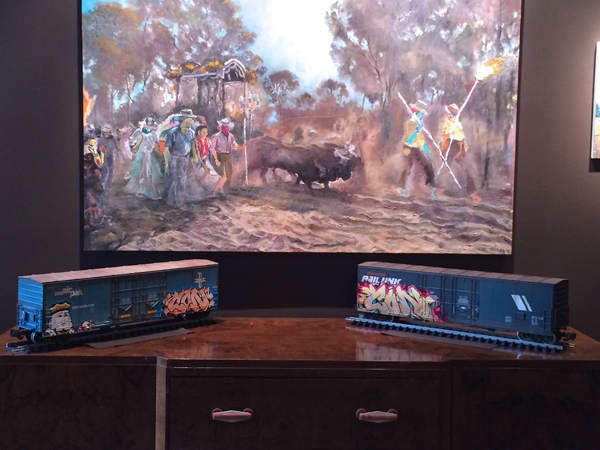
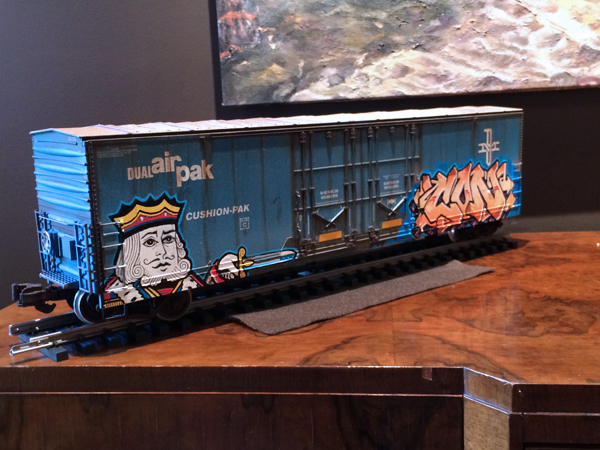

FO: This is an artist by the name of Jimmy Miracle. He’s Florida born and now based in DC and does amazing conceptual work with found objects. A theme that connects many of his work is this really intricate threading and weaving.
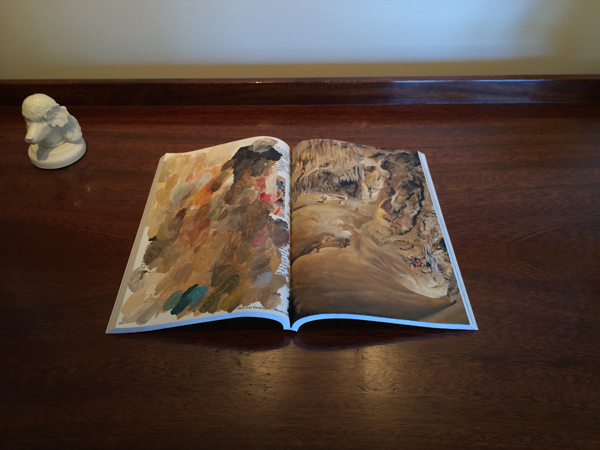
FO: This is by Conor Backman, he’s represented by Mixed Greens in New York. It’s oil on sheet steel, and it is beautifully painted. As you can see it’s a riff on National Geographic in some areas and is also very abstract in others.
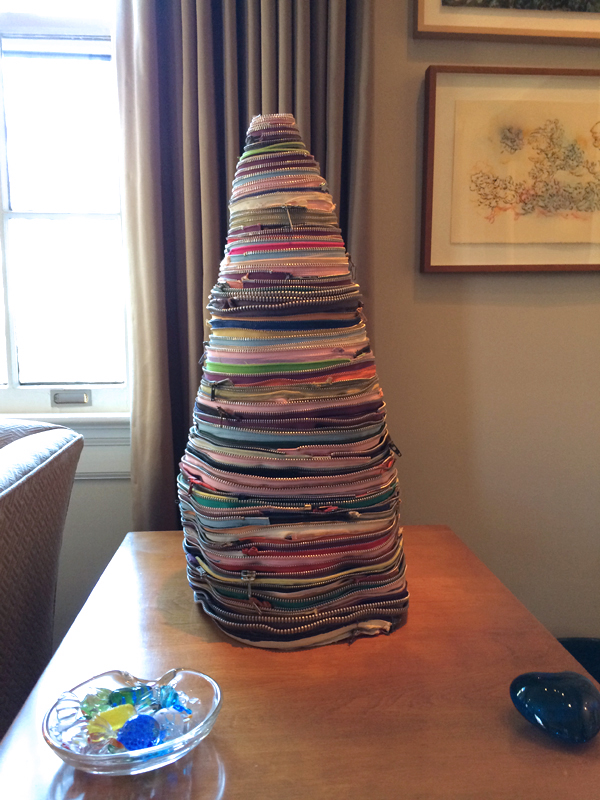
FO: This is by Elizabeth Lundberg Morisette. She used to live in DC and moved to Colorado. She bought zippers online and created some amazing sculptural pieces. This is a fairly large one. She made smaller pieces with zippers as well. Some were little bowls. I just think they are fascinating. I also like the fact that it’s able to stand upright.
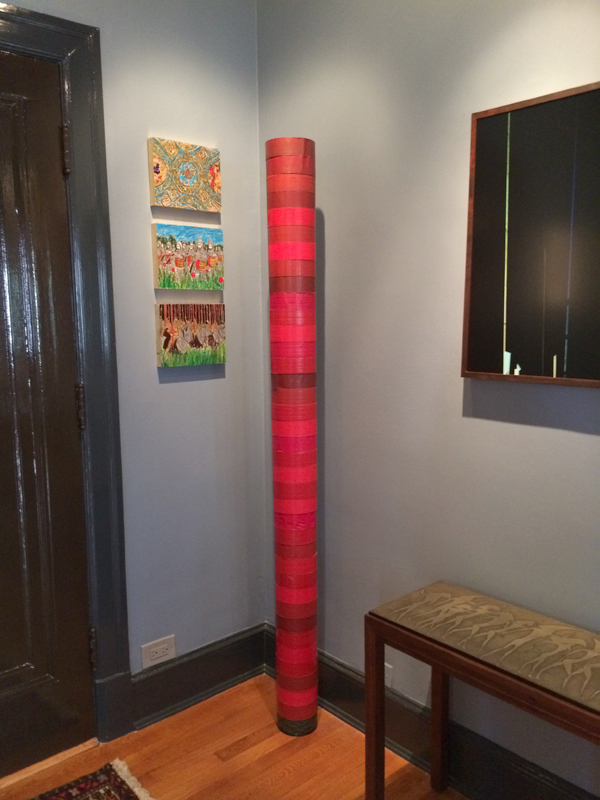
FO: This is by Dan Steinhilber. He’s one of DC’s better known artists currently. He works with objects, some of which are found. These are all different variations of red duct tape. He made what he called a “Totem Series.” Some where all white, some had different colors. He’s also made the sculptural work out of clothes hangers that’s at the Hirshhorn. I think it’s phenomenal.
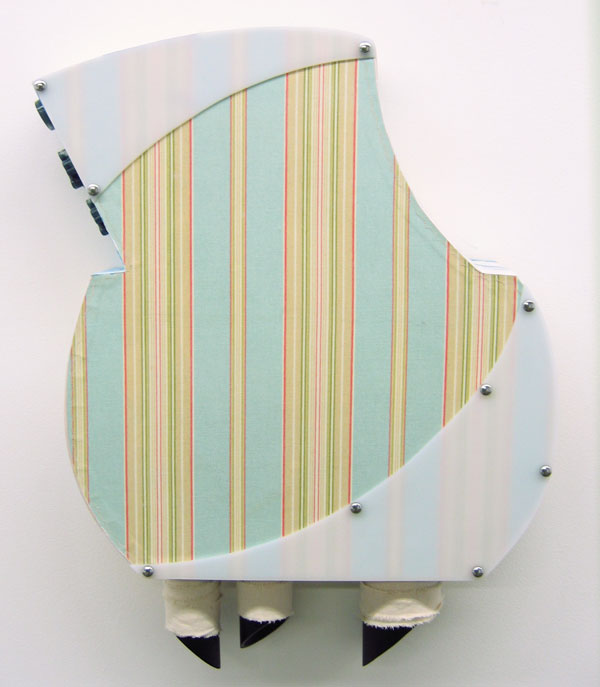
This work is by Patrick McDonough. He’s really a brilliant conceptual artist. I also have a piece at my apartment in Miami. He was fascinated by awnings and awning material. He also did a series where he created awnings on buildings in some of the dynamically changing areas of Washington.
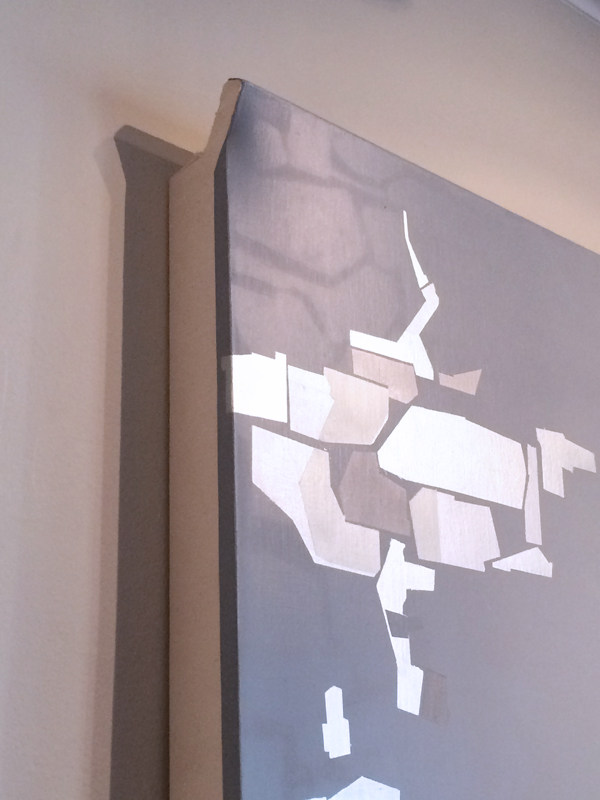
FO: Jason Gubbiotti is a former Washington DC based artist, now living in Switzerland. He was one of the artists selected by Fusebox Gallery for their program, and he was the artist in their inaugural exhibition. This was a painting from that first show. He has a lot of really beautiful surfaces. It isn’t what it seems. As you look at it very carefully, at the different layers, from different angles you can really appreciate the amount of work that went into it. He also has created a lot of work with architectural elements.
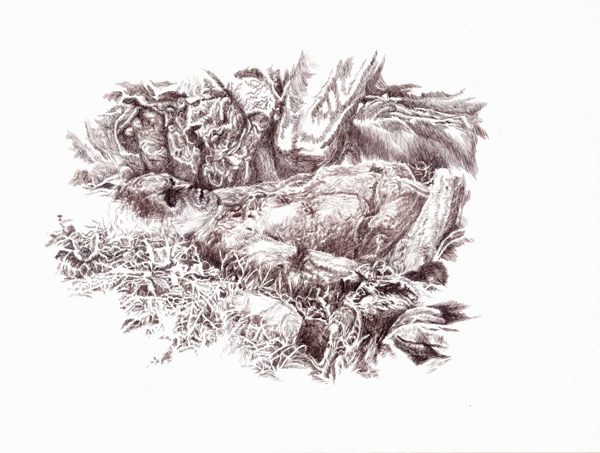
FO: This work is by an artist named Andra Ursuta. She’s represented by an edgy Lower East Side gallery in New York called Ramekin Crucible. She made the frame and did the drawing. Before I could take it home, the New Museum put it in a show. She’s was in the 55th Venice Biennale.
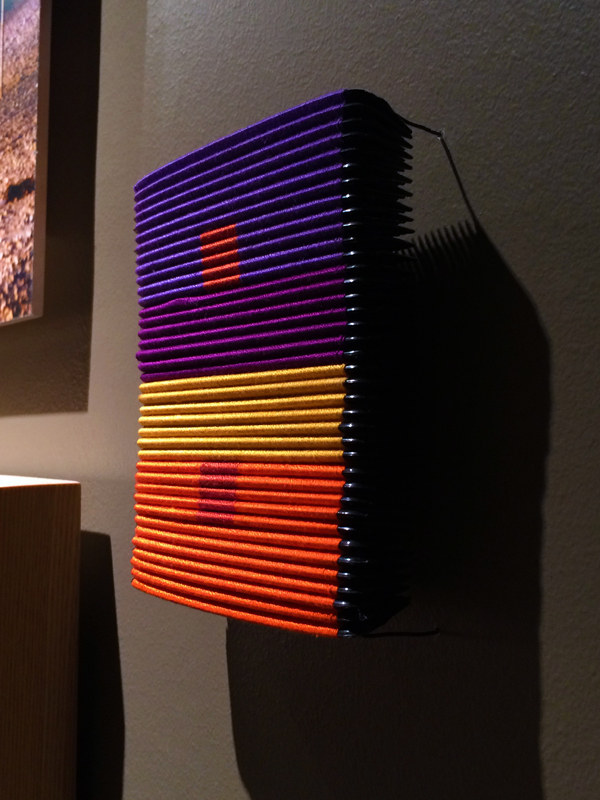

30 x 30”
FO: This is one of my absolute favorite photographs by an artist named Alessandra Sanguinetti. It is very classically structured; it’s almost Baroque in its placement of the figures. The artist found these two cousins who live in rural Argentina. They did not have much materially, but they created these fantasies and the artist worked with them to take it to another level and create this photograph along with many others in the series “The Adventures of Guille and Belinda and the Enigmatic Meaning of Their Dreams.”
For those who might want to begin a collection, the Washington Project for the Arts 33rd Annual Art Auction Exhibition & Gala takes place on March 22, from 7-11 PM at Artisphere in Arlington VA. More info here.
* Author Lu Zhang is a Baltimore-based artist and a Managing Editor at Bmoreart. Lu also works at The Contemporary and teaches part-time at MICA.
